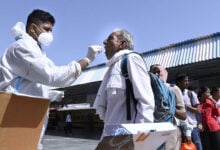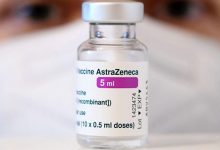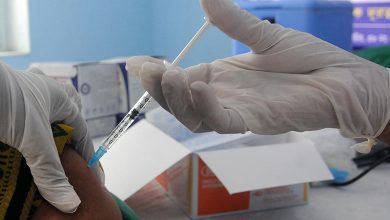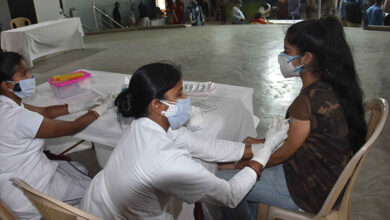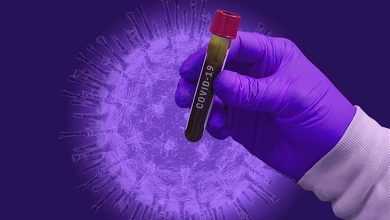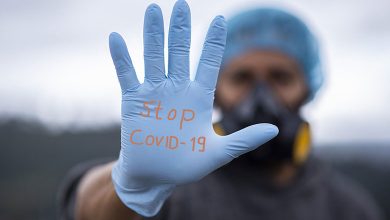Scientists develop system that evaluates mask effectiveness
To evaluate the effectiveness of 14 different types of masks and other frequently substituted face coverings, the research team developed a simple approach.

New York : Scientists have developed a simple approach to visually evaluate how effectively different types of masks prevent the spread of droplets that could contain SARS-CoV-2 (Covid-19) virus.
The results, published in the journal Science Advances, suggest that professional-grade N95 masks, surgical or polypropylene masks, and handmade cotton masks may all block much of the spray produced when the wearers speak.
To evaluate the effectiveness of 14 different types of masks and other frequently substituted face coverings, the research team developed a simple approach in which either one male speaker or, in some cases, four speakers wore each mask while standing in a dark enclosure.
“The speaker would say the phrase ‘stay healthy, people’ five times in the direction of a laser beam, which scattered light from the droplets released during the speech,” said the study authors from the Duke University in the US.
A cell phone camera recorded the droplets and a simple computer algorithm counted them.
The setup was intentionally designed to be simple and inexpensive so it could be replicated by non-experts – the hardware it requires, including laser equipment, is commonly available and can be purchased for less than $200.
While the researchers acknowledge the need for further testing, the findings suggest that N95 masks without valves blocked droplet spread best, but surgical or polypropylene masks and handmade cotton face coverings were also effective.
The early findings suggest that bandanas and neck fleeces (like balaclavas), however, likely provide little protection.
The study suggests that non-experts could easily build and operate this setup to evaluate masks at the community level, such that mask producers could use the method to optimize mask designs, and educational organisations could demonstrate proper mask fitting procedures.
“Our work was a demonstration of a simple measurement method, not a systematic mask study,” the study authors wrote.
“More work is required to investigate variations in masks, speakers, and how people wear them. We also want to extend our method to other droplet-generating actions, like coughing and sneezing,” they added.
“Further, we want to explore effects of incorrect placement and moisture saturation,” the team noted.

